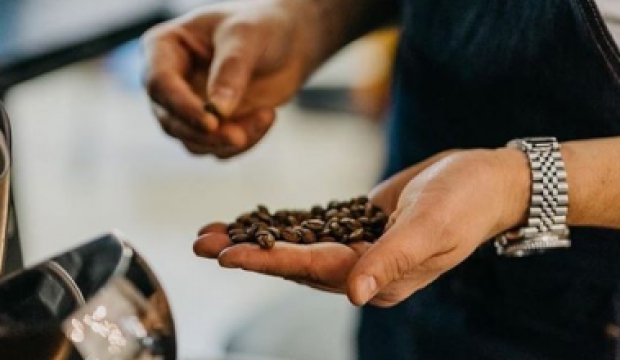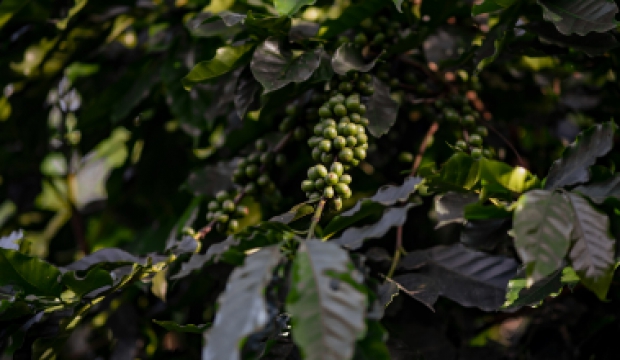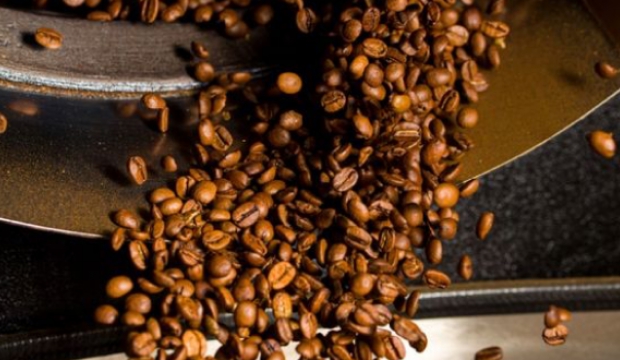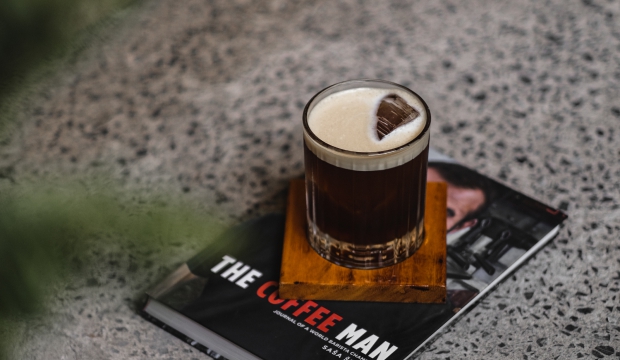I Want to Change the Coffee Taste Preferences of Vietnamese People
Containing many ideas and ambitions, a plan to penetrate the Vietnamese coffee consumer market is taking shape. To succeed, this plan must change the current popular coffee taste preferences.
At a press conference announcing the sale of 10% of the shares to VinaCapital, Mr. Nguyen Van An, Chairman and CEO of Thai Hoa Group, mentioned a new ambition: to secure a position in the domestic coffee market.
This ambition is noteworthy as it comes from a company that has been producing and exporting coffee for over ten years, with recent annual sales exceeding VND 3,000 billion. The company leads Vietnam in Arabica coffee exports, accounting for more than 60% of the nation’s Arabica export volume.
In an interview with VnEconomy, Mr. Nguyen Van An explained that returning to the domestic market is a business necessity, but the larger ambition is to bring about a significant change...
According to Nguyen Van An, “The quality of coffee products does not always reflect the value of the goods; instead, it often depends on consumer preferences.”

Entering the Domestic Coffee Market is No Easy Task
Why did it take such a long time for Thai Hoa Group to consider entering the domestic market?
When I started, that was the direction I intended to take. However, after a period of assessment, I realized that making an immediate profit from the consumer coffee market was not easy.
In the 1990s, my success was limited to 3-in-1 milk coffee and mixed coffee. But then, we shifted towards exporting and building a Vietnamese Arabica coffee brand, leaving the domestic coffee market behind.
Through exporting, I observed that many countries are clearly focusing on their domestic markets. For example, in Brazil, domestic coffee consumption was only around 12 million bags annually, but it has now risen to 18 million, and within five years, it may reach 25 million. Brazil produces about 45–47 million bags a year, making it the world's largest coffee exporter, yet nearly 50% is consumed domestically. Many other countries are recognizing the potential of domestic consumption and investing heavily to stimulate demand. They have realized that to sustain production and business in this field, there needs to be a balance between exports and domestic consumption.
Moreover, in business, there’s always a need for balance, not monoculture. While a company must identify its core fields and operations, the domestic consumer market offers untapped potential. If we only focus on exports, we won’t be prepared for any adverse changes in the global market. Creating balance allows us to stabilize profits.
You said that “consumer coffee is not easy.”
That’s right. On the surface, many people see profits in the domestic coffee market, but the reality is different. The market is not fair. If you make pure coffee, the costs are high, and adding promotions would lead to losses. On the other hand, using less coffee and more additives while promoting heavily can bring profits.
This is why we haven’t yet fully invested in this direction. Many companies have ventured into this market and stumbled. Some believed that offering high-quality, authentic coffee would guarantee success, but that wasn’t the case. Even some brands that stuck with authentic coffee and supported it with a luxurious image still struggled to survive.
Professionalism Can't Compete with Handcrafted Methods

Can you explain more about this contradiction?
Vietnamese consumer coffee consumption is still low, but very diverse. Sometimes, even when the coffee isn’t great, people like it. Meanwhile, they may not appreciate truly high-quality coffee. This isn’t a joke; it’s a real issue.
Currently, the best-tasting coffee is considered to be made from Arabica beans, known for their mild and aromatic flavor, yet many Vietnamese people don’t like it. As a result, a cup of authentic coffee today often doesn’t suit their taste. This is why suppliers are offering products that are “Delicious, Strong, and Exactly What You Like,” meaning it caters to the popular consumer taste—dense and thick coffee.
Making pure, dense coffee is costly, so additives are used. As a result, coffee that isn’t actually good is perceived as tasty because additives create thickness, density, and flavor through chemicals. The nature of Vietnamese consumer coffee, which is mainly hand-roasted, means that the pure aroma of coffee is often lost during the roasting process.
When we introduce consumer coffee made with proper technical methods and excellent aroma, it often lacks the density many people prefer. If you use Arabica to make the coffee denser, it becomes sour; if you add more Robusta, the caffeine content rises. So, people resort to using additives to reduce caffeine, keeping the coffee thick and dense but lowering the stimulant effect.
In reality, a famous foreign coffee company entered Vietnam aiming to offer a pure coffee product with no additives. However, Vietnamese consumers didn’t like it, so they had to switch to coffee mixed with soybean. After much debate, they accepted the addition of additives and eventually succeeded where pure coffee had previously failed.
Many people outside the industry are unaware of these details. This shows that the quality of coffee products does not always reflect the value of the goods; it often depends on consumer preferences.
Can you explain more about this investment challenge?
We invested approximately USD 3 million in a modern consumer coffee roasting plant. In contrast, a private roasting facility might only cost around VND 20 million. Naturally, our USD 3 million investment requires us to sell products at a higher price than those produced by smaller investments. But higher prices don’t necessarily mean better coffee. Consumers might say that the product doesn’t match their taste.
After working in the field for a while, we found it difficult to compete with those producing handcrafted coffee. In some cases, there wasn’t even any coffee in the product. There were times when raw coffee prices were high, and people resorted to using additives and flavors made from corn and soybeans instead of coffee. However, there are no clear regulations on quality control for such products. Because no one has died from drinking it, the issue hasn’t been addressed yet. If there were a case of someone dying from drinking coffee, then it would become a serious concern.
Additionally, there are hidden toxins in certain coffee ingredients, such as mold toxins (OTA), which can cause cancer. Many countries around the world have banned coffee imports containing this mold, forcing products to be destroyed. Yet in Vietnam, it’s still difficult to control due to the widespread, unregulated manual production methods.
The Path Forward for Thai Hoa
How does Thai Hoa plan to navigate these challenges and contradictions?
I really want to establish an association for coffee processing and consumption. We need to guide consumers on how to recognize what makes a good cup of coffee so that they can differentiate and evaluate quality. Otherwise, it’s very difficult to make breakthroughs.
For example, there’s a current trend to name coffee products after foreign countries. That might need to change. We should be proud of Vietnamese coffee. Of course, quality must still be compared. Some of our coffee-growing regions, such as Da Lat, which is grown at an altitude of 1,500–1,600 meters, are comparable to South American coffee, only falling behind Colombian coffee grown at 3,500 meters... Naturally, there are other factors beyond altitude that affect quality. But it shows that Vietnamese coffee can produce very high-quality beans.
That being said, the challenge is to change Vietnamese coffee drinkers' taste preferences—from dense, thick coffee that isn’t necessarily authentic, to lighter, fragrant coffee that is pure.
“We Will Succeed”
Changing consumer habits and preferences is difficult.
With the right policies, change is possible. We need to analyze the elements that make dense coffee desirable and assess whether they are good or bad for health. Perhaps people would prefer the natural aroma of coffee over chemical flavors, and consumers should be able to choose. Sellers should also clearly label the ingredients and compounds in their products. This change will take time, investment, and the cooperation of coffee producers.
We aim to create a new coffee product line from scratch. This requires starting with marketing, introducing the product, and generating a buzz in the market. Sooner or later, we will make a comeback.
The key is to develop a communication campaign to educate people on how to drink, brew, and recognize good or bad coffee. We also need to build a distribution system. For instance, a model where coffee is roasted from whole beans sourced from regions like Son La or Da Lat, then ground and packaged on-site. This approach would help introduce consumers to real coffee. Another solution is to promote coffee machines for home use, ensuring that people enjoy high-quality, naturally flavored coffee. This requires thorough marketing and consumer education.
Previously, I planned to work with Vinamilk to establish a USD 2 million fund for a communication campaign. However, Vinamilk has since transferred its coffee project. I have also discussed the idea with Vinacafé, which supports the idea of launching a program to change consumer behavior. We’ve also negotiated with specialists to influence managers, industries, and the public.
My goal is to drive positive change, not negative.
However, as I’ve said, changing habits and preferences is extremely challenging.
It’s difficult but necessary, especially to protect consumers' health. Initially, people preferred deep-fried instant noodles because of their rich flavor. But after learning about health risks, consumer preferences began to shift. It’s a matter of providing the right information. If people don’t listen the first time, we’ll explain ten more times.
Additionally, there needs to be clear regulations on coffee production and trading. We must establish quality standards to eliminate substandard products, particularly those harmful to health. The state must also play a role in regulating and supervising this market.
Standing Out in the Market
In addition to introducing a pure coffee product line, is Thai Hoa planning to establish signature coffee shops?
We had considered setting up a chain of signature coffee shops in major cities like Hanoi and Ho Chi Minh City. However, based on current market research, such a chain is not yet feasible for us. There are simply too many coffee brands and businesses, and competition is intense. Opening a chain would require careful planning, and the costs are prohibitive at this point.
Therefore, we will focus on launching a product line and selling through the appropriate distribution channels first. Only when we establish our market position can we consider developing our own coffee shop chain.
However, I still believe that this will be possible in the near future.
Moreover, we intend to market our coffee product line in various other countries to elevate the value of Vietnamese coffee globally. Currently, we have already opened markets in North Korea, Russia, and countries in Eastern Europe. We plan to push even further into Japan, the Middle East, and Latin America in the future. Our goal is to be a proud Vietnamese brand that represents the quality and excellence of Vietnamese coffee.





